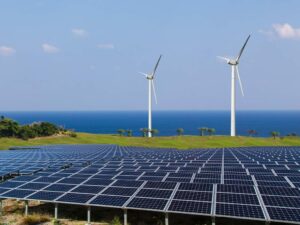The South African Photovoltaic Industry Association (SAPVIA) has raised significant concerns regarding the cost assumptions and building limits outlined in the draft Integrated Resource Plan 2023 (IRP 2023). In its formal submission to the department, SAPVIA questions both the accuracy of the cost estimates for solar PV technology and the imposition of a 900 MW yearly build limit on distributed solar projects. SAPVIA’s response, submitted before the March 23 public comment deadline, asserts that the cost assumptions for solar PV technology from Horizon 1 to 2030 are inaccurately portrayed in the draft IRP 2023, which also encompasses Horizon 2 spanning from 2030 to 2050. With over 800 members spanning the solar value chain, SAPVIA argues that the input cost assumptions for all renewable energy generation technologies are higher than international benchmarks, resulting in modeling outcomes that offer less renewable generation capacity compared to previous IRP iterations and benchmark studies. The association emphasizes the need to adjust these assumptions to reflect the costs associated with existing public and private projects already procured domestically. Furthermore, SAPVIA highlights the absence of technology learning rates and potential cost decreases, particularly in battery storage, which are not adequately considered in the draft IRP. SAPVIA recommends that the department conducts revised modeling incorporating updated technology costing to establish a least-cost reference case, which can serve as a basis for future policy adjustments.
Moreover, SAPVIA calls upon the Department of Mineral Resources and Energy to clarify the rationale behind the 900 MW yearly build limit on distributed solar, describing it as “unclear.” This limit, SAPVIA argues, contradicts data from Eskom showing substantial private solar PV installations and registrations with the regulator, indicating a higher capacity demand than the imposed limit suggests.
Dr. Rethabile Melamu, CEO of SAPVIA, underscores the existing mismatch between the prevailing IRP 2019 and actual solar PV installation rates, predicting even greater disparity should the draft IRP 2023 be adopted as the official plan. While SAPVIA supports the division of the IRP into two horizons, it stresses that Horizon 1 fails to adequately address the issue of load shedding, which should be a primary focus. Furthermore, SAPVIA points out a misalignment between the draft IRP 2023 and other government policies and recent industry developments, including ongoing reforms in the electricity supply industry (ESI). To ensure effective implementation, SAPVIA suggests aligning the IRP with various policies such as the National Development Plan, Eskom’s Transmission Development Plan, the South African Renewable Energy Masterplan, and the Electric Vehicles White Paper, alongside new electricity and climate legislation. Melamu expresses SAPVIA’s readiness to collaborate with the government in finalizing the IRP 2023, whether through additional consultations or via structures like the National Economic Development and Labour Council (Nedlac) | South African Government (www.gov.za).






